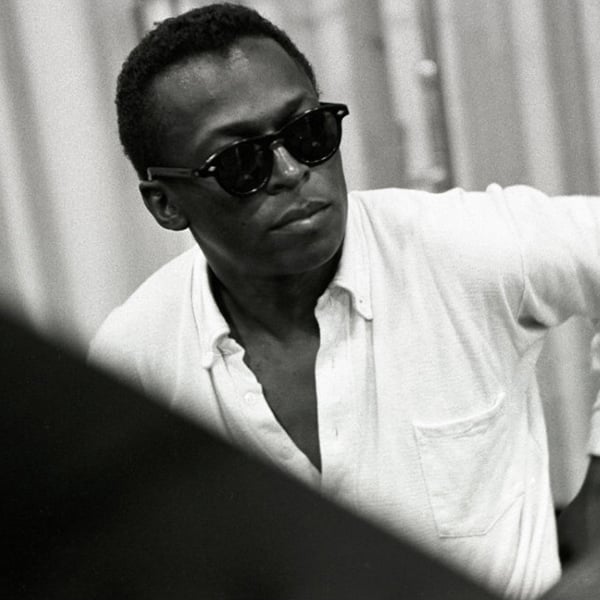
As jazz developed through its long history, from earliest roots in New Orleans to widespread popularity during the swing era, maturing into a more exalted, less mainstream “art” music, the music’s audience divided again and again, older fans resisting the coming of the new. To this day, none of these historic splits remains as controversial—the wound still fresh—as when jazz went “electric” in the late 1960s, when amplified gear appeared alongside acoustic instruments, when the music got loud, borrowing the rhythms of funk and the dynamics of rock.
Miles In The Sky was Miles’ first foray into this brave new world—recorded in January and May of 1968—four lengthy tunes that began to explore the use of electric piano and electric bass (on the track “Stuff”) and Miles expanded his own arsenal, playing the somewhat more blaring cornet on half the album (his own tunes “Stuff” and “Country Son”). Significantly, Miles invited a new instrument into the mix: George Benson playing the defining riff on electric guitar on Shorter’s “Paraphernalia.” It was the start of a romance that would intensify through the rest of Miles’ career—plugged-in guitarists becoming a standard element on his recordings and a part of his stage shows.
The true star here is Tony Williams—stretching the vocabulary of jazz drums to include the excitement and yes, mayhem of rock and R&B: torrents of drum rolls and thunderous cymbal crashes. Every drummer on either side of the jazz-rock divide was by now paying attention; these are the seeds of what will soon be dubbed Fusion. “Black Comedy” is the drummer’s tune, a vigorous exercise in time-shifting, raising and lowering the temperature, that holds together because Williams makes it so.
To be sure Miles In The Sky (titled as a reply to The Beatles’ psychedelic hit “Lucy In The Sky With Diamonds”) was not the birth-cry of jazz-rock; the two styles had been meeting and mingling to varying degrees of success since 1965. What Miles did was push the hybrid into a late adolescent stage—still maturing, yet convincing and confident, with the benefit of various ideas that had been born in the Second Great Quintet. Though the Shorter-Hancock-Carter-Williams lineup would not continue for much longer, each of them—and Miles of course—are looked upon as the pioneers of Fusion, and each would come to play important roles in the musical revolution to come.















